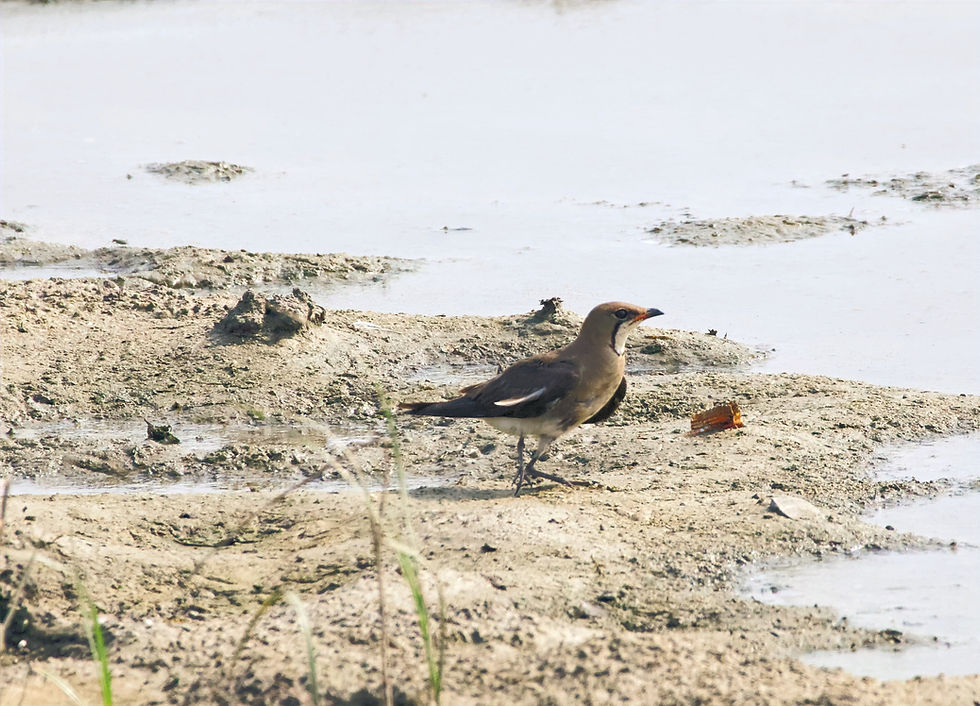Field Notes: Oriental Pratincole's Distraction Behaviour
- Symrna Darkmorph

- Jul 24
- 2 min read
On the morning of June 21st, 2025, my friend-turned- photography instructor, Saurav Choudhury, and I were honing my flight photography skills at the Chandu-Budhera agricultural wetlands. After four hours of intense practice, around 10:15 AM, we were preparing to leave. As we drove past a small water puddle, Saurav casually remarked, "It would be nice if a Pratincole drank from here; that would be a great practice opportunity for you." As if on cue, an Oriental Pratincole (scientific name: Glareola maldivarum) appeared, flying awkwardly as if injured, and landed near the water.

I was convinced the bird was in distress. It landed, then limped a short distance, dragging itself towards the water with one wing half-unfolded. It then settled on the ground, appearing utterly exhausted. The bird remained alert, constantly scanning its surroundings, seemingly checking for predators.

This peculiar posture, with one wing still held open, lasted for about two minutes before it moved further into the puddle.

My concern grew, and I instinctively asked Saurav if we should attempt a rescue. He subtly signaled for us to remain in the car.

Suddenly, the Pratincole sprang up and flew away, perfectly fine, as if nothing unusual had happened. I turned to Saurav, my face a mask of shock. "What was that?!" I exclaimed in disbelief.
He simply smiled, allowing the suspense to build, and encouraged me to research the behaviour. Later that day, he shared more information about the Oriental Pratincole's broken-wing display, and suddenly, everything clicked into place.
The Oriental Pratincole's Broken-Wing Display: A Scientific Insight
The peculiar behavior we witnessed is a classic example of an anti-predator strategy known as the broken-wing display. Many ground-nesting bird species, including pratincoles, use this elaborate act to distract potential predators away from their vulnerable nests or young.
When a predator (like a snake, fox, or even a human) approaches, the adult bird will pretend to be injured. It might:
Feign a broken wing: Drags a wing, limps, and appears unable to fly properly.
Acts exhausted: Settles on the ground with an air of weakness.
Draws attention: Makes itself conspicuous while moving away from the nest.
The goal is to trick the predator into believing it has an easy meal, luring it away from the hidden eggs or chicks. Once the predator is a safe distance from the nest, the "injured" bird miraculously recovers and flies off, leaving the predator baffled and empty-handed. This intricate behaviour highlights the remarkable adaptations birds have developed to ensure the survival of their offspring.




Comments